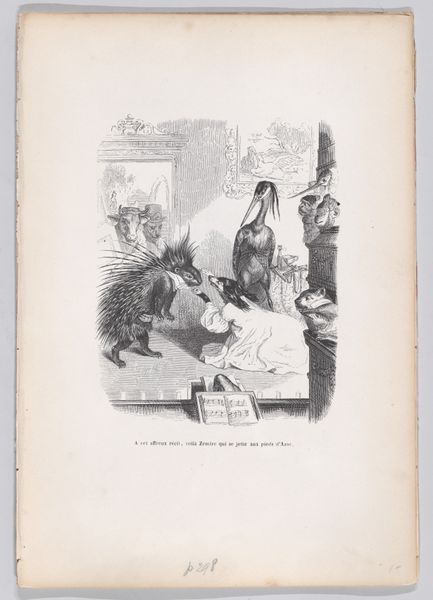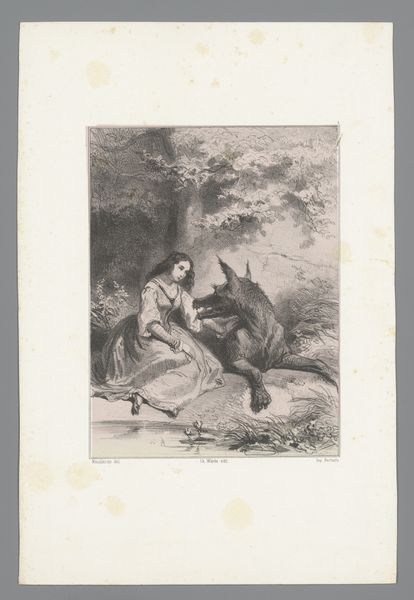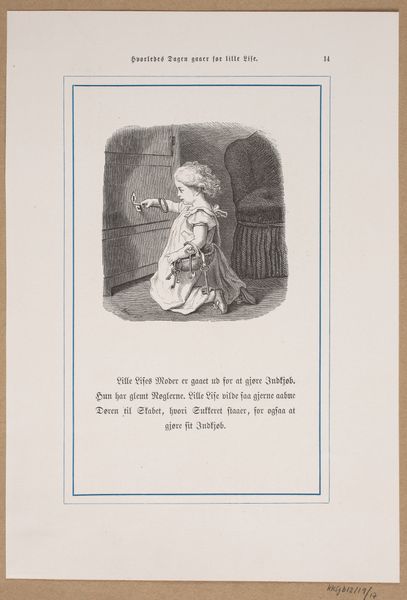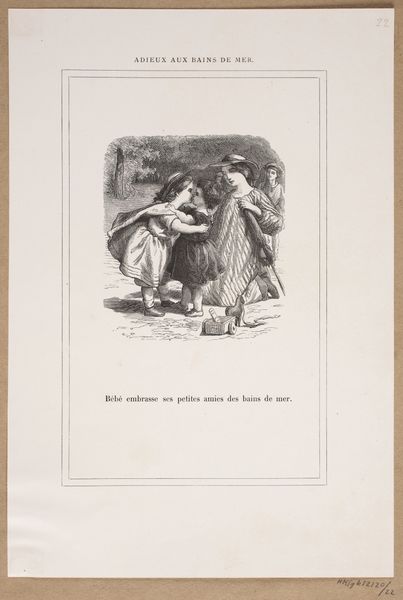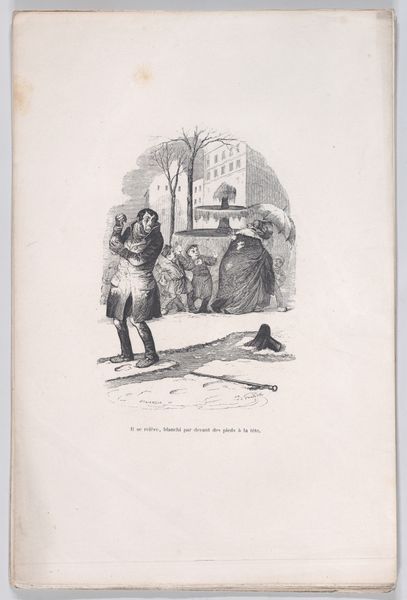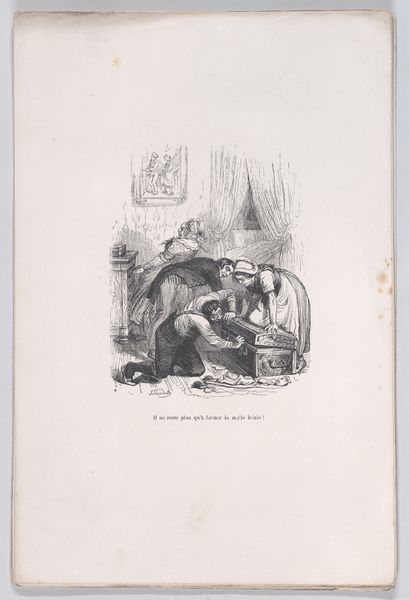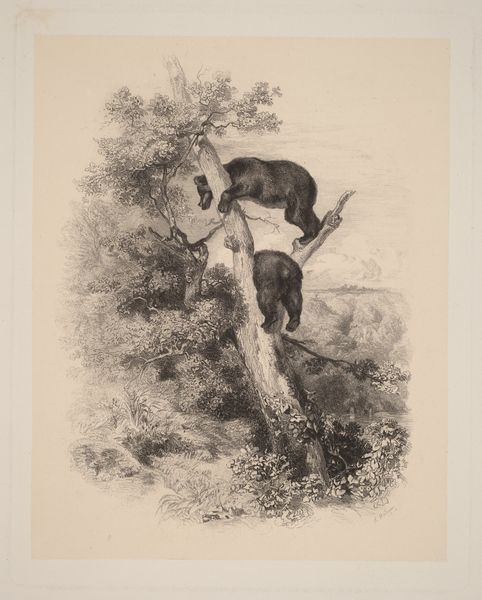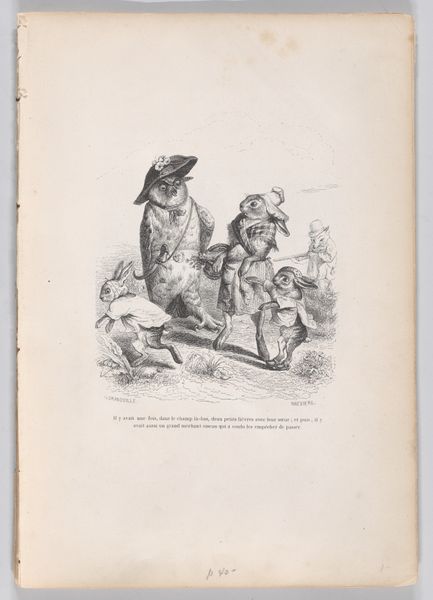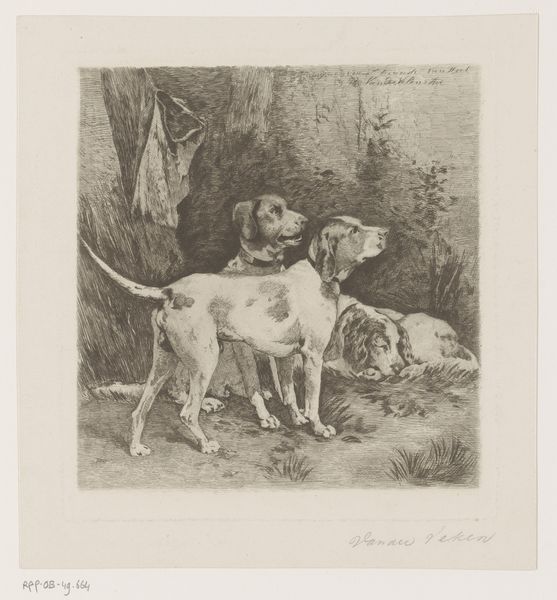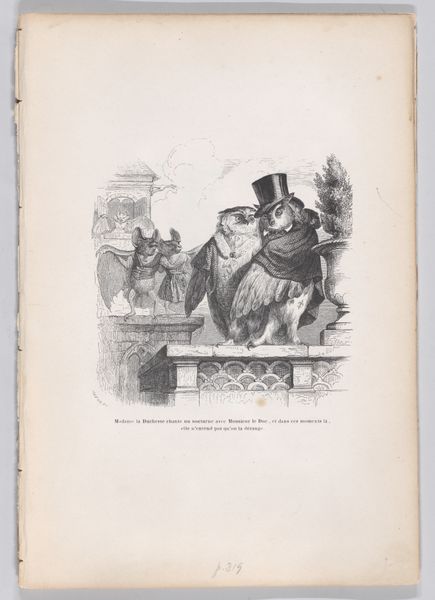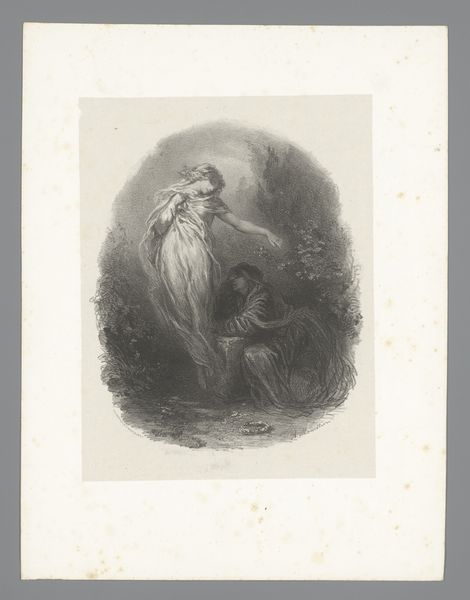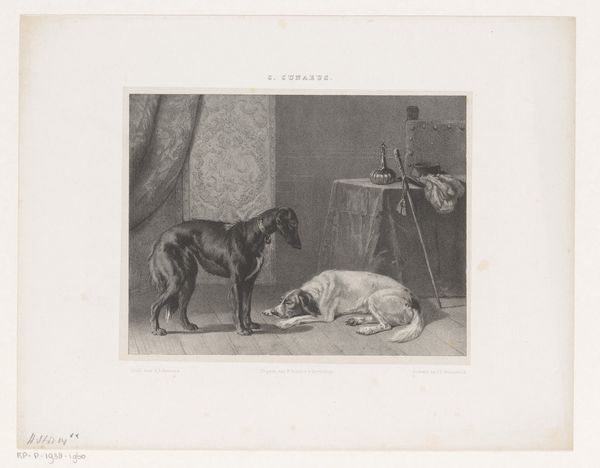
print, woodcut
#
narrative-art
# print
#
woodcut
#
genre-painting
#
realism
Dimensions: 275 mm (height) x 190 mm (width) (bladmaal)
Curator: Here we have Lorenz Frølich's "Bébé procure un grand plaisir a César," a woodcut from 1863. The piece currently resides here at the SMK, the Statens Museum for Kunst. Editor: My immediate impression is one of understated charm. It’s a relatively small, monochromatic scene, but the density of the woodcut lines lends it a certain weightiness and almost makes it look soft. There’s an intimacy here. Curator: Intimacy born of process, I would argue. The printmaking medium—specifically woodcut—demands a certain closeness between artist and material. Consider the physical labor involved in carving that matrix. Each line, each curve, is a deliberate act, engaging both hand and mind, mirroring the care that the little girl, Bébé, has for the big dog, Cesar. The text beneath even describes "Le gros Monsieur," presumably César, gathering a bouquet, though not without some struggle. This resonates with the effort required for this form of production, the making visible through the contrast in lines between figure and space. Editor: I see the connection between material practice and pictorial narrative, but what grabs me is the subtle drama enacted in the interplay between innocence and loyalty. Bébé offering flowers to Cesar is a clear symbolic gesture of affection and harmony. Bouquets symbolize positive regard—but consider the symbolic heft of dogs. Through ages dogs symbolize loyalty, friendship and watchfulness. This moment that Frølich captures then, it's so much more than what’s literally happening. Curator: But the actual reception of this sentimental imagery also relies heavily on how readily available such a print might have been. The nature of printmaking allows for multiples, expanding the audience beyond an elite few. To understand the power, the meaning, and the very point of making such images, we must ask questions of who this was accessible to and why! Was it intended to teach certain values or was it simply for pure enjoyment? The implications of material accessibility should inform our view! Editor: I appreciate your materialist angle. Perhaps both, and neither—it seems that by bringing those strands of visual symbol together, dog, child, flowers—Frølich evokes a space of harmony that touches both the intimate familial sphere, the place for morals and feelings, as well as wider values beyond the personal realm. Curator: The interplay is something to meditate on—I believe the synthesis here shows art as an essential component to understand society then. Editor: Precisely, a potent blend, indeed.
Comments
No comments
Be the first to comment and join the conversation on the ultimate creative platform.
